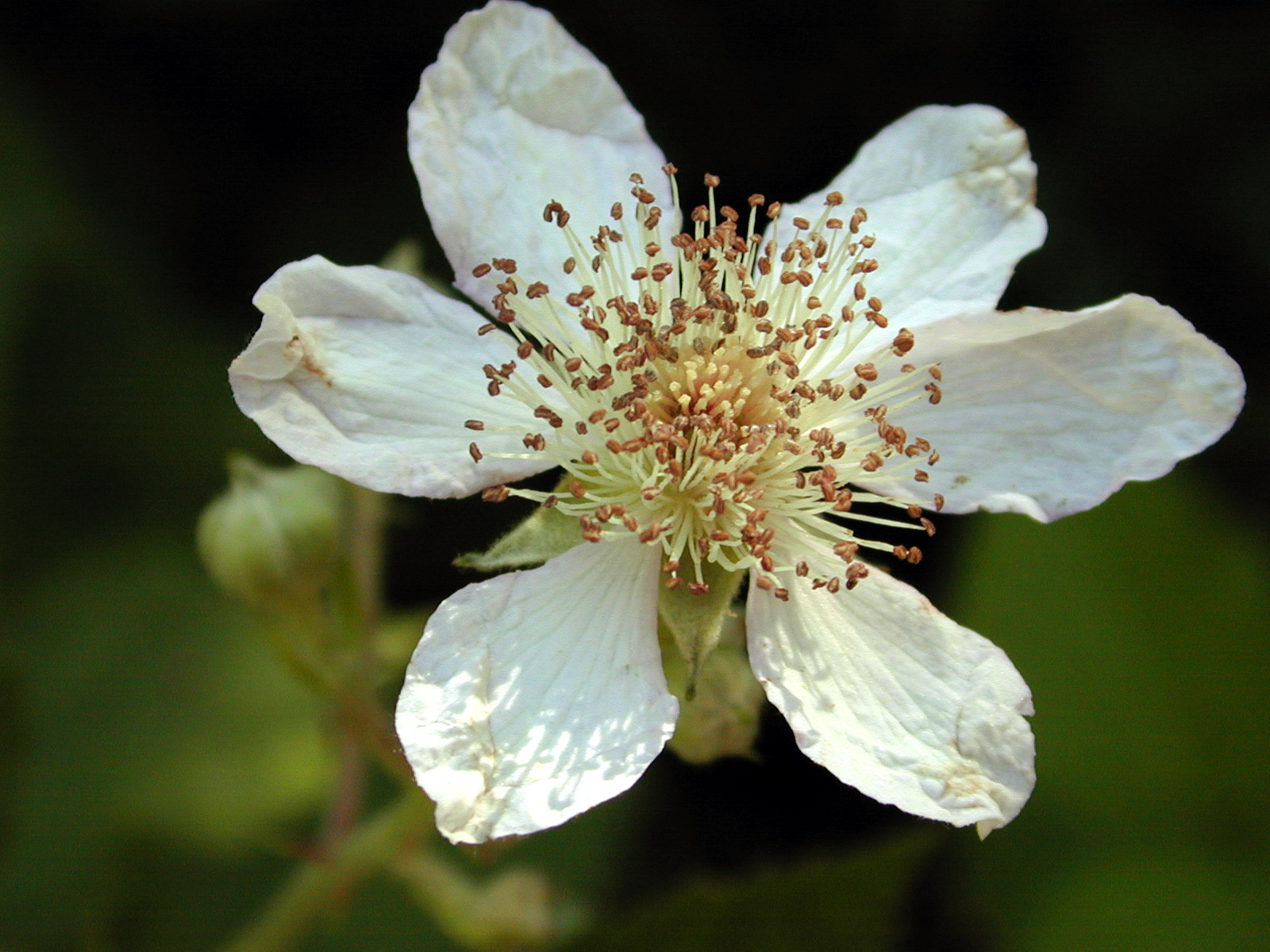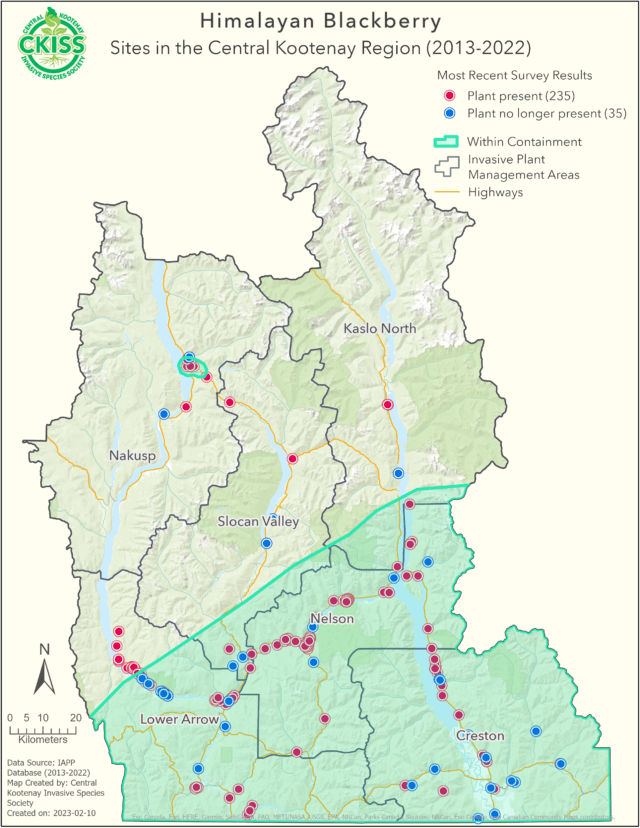Rubus armeniacus
Description
- Stiff, 5-edged stems can grow 3 m tall and 12 m long.
- Produce green, large, toothed leaves.
- Leaves are arranged in groups of five on young plants, and groups of three on older plants.
- Berries are black, shiny, and hairless.
- Flowers are small and white or pinkish with five petals and are arranged in clusters.
Introduction and spread
- This plant has been spread in part by deliberate planting by humans for berry harvest
- Root and stem fragments can form a new individual
- Feces of animals that eat blackberries spreads seeds
Consequences of invasion
- Competes with native shrubs by shading out the sun
- Create dense thorny thickets that impede the movement of wildlife
- Dense thickets can also negatively impact human recreational opportunities like bike trails.
- Reduces visibility along road ways and takes over stream channels and banks and roadside ditches
Status in the CKISS region
- Himalayan blackberry is currently classified as Contain on the CKISS Annual Priority List.
- While it is considered widespread in the Nelson and Creston Invasive Plant Management Areas, it is less prevalent in other parts of the region.
- It is classified as Contain for those parts of the region where it is not widely established. In those areas, CKISS is working to contain this species and prevent it from spreading to new areas.
- If you notice this plant growing outside of its containment area, please report it!
- To learn more about how CKISS classifies and manages invasive species, see our Invasive Species Priority Lists page.
Integrated pest management options
Prevention
- Be PlantWise! Choose plants that are not invasive by Growing Me Instead!
- Watch for plant parts clinging to your clothing
- Avoid having bare soil or disturbed ground on your property
Mechanical treatment
- Hand-pull small, young plants.
- Dig older plants. Digging must be very thorough as root fragments left in the soil will re-sprout.
- Cutting thickets back may be required first to access the soil where roots are established.
- Cutting alone is not as effective as digging, but could be effective if repeated over many years.
- Note that birds may nest in blackberry thickets. If this happens on your property, take care to conduct removal activities outside of their nesting period.


